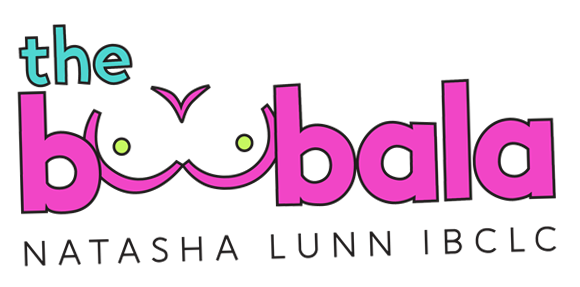Page Content
- Is there milk in the breast when not pregnant?
- Can I feed my husband my breast milk?
- How can I breastfeed my boyfriend but not pregnant?
- Does leaking breasts mean good milk supply?
- What produces a lot of breastmilk?
- What can cause lactation without pregnancy?
- When I squeeze my nipples, liquid comes out.?
- How long do breasts take to refill?
- What triggers milk production in the breast?
- What causes high production of breast milk?
Understanding Breast Milk Production
Breast milk production is a remarkable physiological process that begins during pregnancy and continues after childbirth. This intricate system is primarily governed by hormonal changes and the structural anatomy of the breast itself.
The Anatomy of the Breast
The breast is composed of lobes, which are further divided into smaller units called lobules. Each breast typically contains between 15 to 20 lobes, arranged like spokes on a wheel around the nipple. Within these lobules are tiny glands that are responsible for milk production. The milk is then transported through a network of milk ducts, which are canals designed to carry the milk from the lobules to the nipple.
Hormonal Regulation of Milk Production
The production of breast milk is primarily regulated by two hormones: prolactin and oxytocin. Prolactin is crucial for initiating milk production. When a baby suckles at the breast, sensory signals are sent to the mother’s brain, prompting the release of prolactin. This hormone stimulates the alveoli (the milk-producing glands) to begin producing milk .
Oxytocin plays a different but equally important role; it is responsible for the let-down reflex, which helps to release the milk from the alveoli into the ducts, making it available for the baby. This hormonal interplay is vital, especially in the early days after birth, when milk production significantly increases, typically around 2 to 4 days postpartum.
The Process of Lactation
Lactation, the process of producing and releasing milk, begins during pregnancy. Hormonal changes signal the mammary glands to prepare for milk production even before the baby is born. After delivery, the combination of hormonal signals and the physical act of breastfeeding establishes a supply-and-demand system. The more the baby suckles, the more milk is produced, ensuring that the infant receives adequate nutrition.
Breast milk is not only a source of nutrition but also contains essential antibodies and growth factors that support the infant’s immune system and overall development. This makes breast milk uniquely suited to meet the needs of newborns, particularly in the first six months of life.
Conclusion
In summary, breast milk production is a complex interplay of anatomical structures and hormonal signals. The lobes and lobules of the breast work in conjunction with hormones like prolactin and oxytocin to ensure that mothers can provide their infants with the best possible nutrition. This natural process highlights the incredible adaptability of the human body in nurturing the next generation.
Is there milk in the breast when not pregnant?
This is not normal and this should not be happening. If you are having breast milk coming out of your breast without a pregnancy or without breastfeeding, this could be a sign of a raised hormone called prolactin. If your prolactin is raised, you might start spontaneously producing breast milk.
Can I feed my husband my breast milk?
While the practice isn’t commonly discussed, some people enjoy adult breastfeeding. You might want to experiment with this practice for many reasons, though you might also find it uncomfortable. There aren’t major health concerns in most cases, so if you’re intrigued, free to try breastfeeding your husband or partner.
How can I breastfeed my boyfriend but not pregnant?
Inducing lactation in people who aren’t pregnant requires medication that mimics hormones your body makes during pregnancy. Suckling from the nipple can initiate lactation, either with a breast pump or by a baby.
Does leaking breasts mean good milk supply?
You can leak breastmilk for a variety of reasons including having a full supply, or if your body is not yet sure how much to produce, if your mature milk is starting to come in, if you’ve missed a feeding, or even if you are just thinking about your baby.
What produces a lot of breastmilk?
Foods That Promote Milk Production. Many vegetables, whole grains, and herbs are high in plant estrogens and other compounds that may increase milk supply. They’re called galactagogues. New mothers in many cultures have used these foods for centuries to optimize breastfeeding.
What can cause lactation without pregnancy?
Excessive breast stimulation, medicine side effects or conditions of the pituitary gland all may contribute to galactorrhea. Often, galactorrhea results from increased levels of prolactin, the hormone that stimulates milk production. Sometimes, the cause of galactorrhea can’t be determined.
When I squeeze my nipples, liquid comes out.?
Liquid may leak from your nipples on its own or when they’re squeezed. It can be lots of different colours, including clear, white, yellow, green or bloody. Nipple discharge may be nothing serious, but sometimes it can be a sign of an underlying condition, including a breast cyst or breast cancer.
How long do breasts take to refill?
Milk is actually produced nonstop—before, during, and after feedings—so there’s no need to wait between feedings for your breasts to refill.
What triggers milk production in the breast?
Prolactin causes the alveoli to begin making milk. Oxytocin causes muscles around the alveoli to squeeze milk out through the milk ducts. When milk is released, it is called the let-down reflex.
What causes high production of breast milk?
Some breastfeeding parents naturally produce more milk due to their genetics. You may also be at greater risk for hyperlactation syndrome if you have hyperprolactinemia. Certain herbal supplements may also affect your milk supply.

